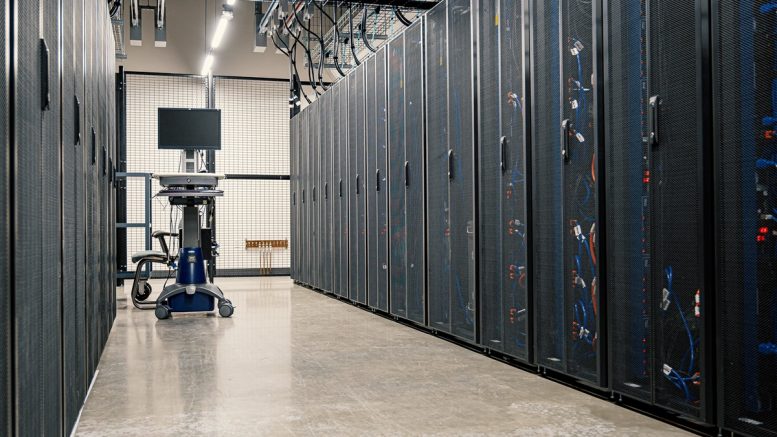Data center management is an important but often underserved need in any organization. The healthcare industry faces more pressure to optimize its data centers than most, given the sensitivity and urgency of its information.
The need for better data management is clear, but how to achieve it is less so. To remedy that, here are six best practices for data centers in healthcare.
Practice Strong Cybersecurity
Cybersecurity is one of the most critical considerations for any data center, especially in healthcare. Data breaches in this industry have more than doubled since 2018 and continue to trend upwards.
Medical data centers should deploy automated monitoring technologies to catch and contain attacks early. Segmenting them so an attack can’t spread from one area to all others is similarly crucial, especially for larger organizations. Other best practices include minimizing access privileges, encrypting all sensitive information and conducting regular penetration testing.
Remember that robust security doesn’t just apply to internal systems. The Red Cross suffered a major data breach in 2022 because an attacker targeted third-party data centers. All partners must meet high security standards before earning trust.
Don’t Overlook Physical Security
As prominent as cybercrime is, healthcare organizations must remember to consider physical threats, too. Data centers that don’t have thorough physical security are still vulnerable to damage and infiltration, even with the most advanced technical defenses.
Servers should remain behind locked doors at all times. Only people who need in-person access to this equipment, like maintenance personnel, should be authorized to enter the data center. Keycards or biometric authentication and security cameras can enforce these rules.
Physical security should also protect against threats like natural disasters or equipment failure. Fire suppression systems, flood barriers and anchoring equipment to prevent racks from falling are a good start. Sufficient cooling infrastructure and surge protection are also important.
Keep Data Organized
Organization is an easier-to-miss best practice for healthcare data centers but a significant one. Hospitals generate 50 petabytes of data annually on average. Without sufficient organization, sorting through those massive volumes to find needed information or uncover suspicious activity will be difficult.
Healthcare organizations should adopt a tiering system to efficiently manage their data. As records become less impactful or less frequently accessed, they move to lower-level tiers. The highest levels should run on the fastest, most reliable storage systems, while the rest reside in cheaper but slower solutions.
This organization impacts security, costs and quality of care. Healthcare providers can act faster when critical data is more easily accessible. The increased visibility similarly enables faster cyber incident responses. If nothing else, tiering reduces storage costs.
Ensure Redundancy
Redundancy is another crucial data management technique for healthcare organizations. Data center downtime costs American businesses $700 billion annually, and sensitive information like health records are costlier than most. Redundancy minimizes this disruption.
Healthcare data centers need two types of redundancy. First, they need backups of the information itself. Backups aren’t necessary for the entire organization’s data but are essential for patient records and other sensitive information. These spare copies should exist in a different medium than the originals to minimize risks.
Next, healthcare data centers need equipment redundancy to prevent outages in the first place. That includes backup generators, cooling systems and uninterruptible power supplies (UPS). More mission-critical servers should have higher levels of redundancy than those hosting lower-value data.
Have an Emergency Response Plan
Similarly, healthcare data centers must have a formal response plan for when things go wrong. Prevention is always ideal, but considering 60% of data centers have experienced an outage in the past year, forgoing emergency response is too risky.
Response plans should include steps for reporting the issue, retrieving backups, communicating with key stakeholders and performing remediation. A list of responsibilities for each employee will also prove useful to enable faster responses. Larger or more sensitive organizations may need multiple response plans for different emergencies.
All plans should revolve around two main goals — securing sensitive patient data and keeping mission-critical systems as available as possible. If data centers do that, healthcare professionals can keep delivering quality care and comply with regulations despite the issue.
Routinely Rethink Data Needs and Strategies
Healthcare organizations must also recognize that data center strategy is not a one-time practice. Over time, some information will grow less useful, new data will become critical, innovative technologies will emerge and regulations will change. Healthcare data centers’ needs must also shift, so review and adjustment are necessary.
At least once annually, data center operators should review their current practices and compare them to their changing needs. They may need to adopt a new organizational strategy, upgrade infrastructure, adjust backup practices or move to a new security system. Some unexpected changes — like new laws or disruptive technologies — may warrant review outside this normal time frame.
As part of this ongoing improvement, data centers should also routinely benchmark their performance and costs. This will generate hard data to reveal trends highlighting improvements or the need for change. Some factors to measure include response time, available space, cybersecurity incidents and server temperatures.
Healthcare Data Centers Must Meet High Standards
Data centers are the backbone of a data-driven society. Consequently, optimizing them is crucial, especially in industries facing such high standards as healthcare.
Meeting these goals may initially seem intimidating, but it doesn’t have to be. Healthcare organizations that follow these six best practices can keep their data accessible, secure and resilient. They can then deliver higher standards of care and remain compliant in any situation.
By Zac Amos, rehack.com





